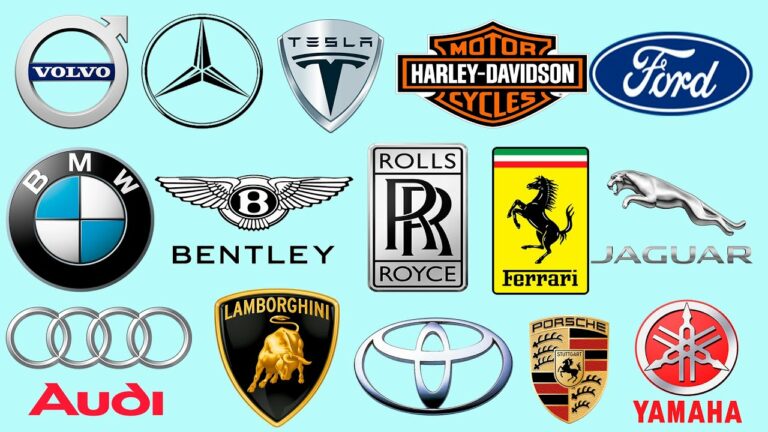Best Car Radio Brand: Navigating the Soundwaves of Your Journey
Best Car Radio Brand: Navigating the Soundwaves of Your Journey cars.truckstrend.com
The modern car radio has evolved far beyond a simple device for tuning into local broadcasts. Today, it stands as the central command hub of your vehicle’s infotainment system, seamlessly integrating navigation, communication, and a vast universe of entertainment options. Choosing the "best car radio brand" isn’t just about finding a device that plays music; it’s about selecting a companion that enhances every drive, transforms your commute, and delivers a personalized audio-visual experience.
But what truly defines the "best"? Is it unparalleled sound fidelity, cutting-edge smart features, rock-solid reliability, or simply the best value for money? The answer, as with many aspects of personal technology, is subjective and highly dependent on individual needs, preferences, and your vehicle’s specifications. This comprehensive guide will dissect the elements that contribute to a car radio’s excellence, explore the leading brands vying for the top spot, and equip you with the knowledge to select the perfect audio heart for your car.
Best Car Radio Brand: Navigating the Soundwaves of Your Journey
Understanding What Makes a Car Radio "Best"
Before diving into specific brands, it’s crucial to understand the core attributes that elevate a car radio from good to great. The "best" brands consistently excel in a combination of these critical areas:
- Sound Quality and Audio Processing: This is the bedrock. A superior car radio brand will incorporate high-quality Digital-to-Analog Converters (DACs), robust internal amplifiers, and advanced audio processing features like multi-band equalizers (EQ), time alignment, and crossover controls. These features allow for precise tuning, ensuring crisp highs, rich mids, and deep, defined bass, even before considering external amplifiers or speakers.
- Feature Set and Connectivity: Modern drivers demand more than just AM/FM. The best units offer seamless Bluetooth for hands-free calling and audio streaming, multiple USB inputs, auxiliary ports, and increasingly, Wi-Fi connectivity. Integration with Apple CarPlay and Android Auto is now a non-negotiable for many, transforming the car’s display into a safe and intuitive extension of your smartphone.
- User Interface (UI) and Ergonomics: A powerful radio is useless if it’s frustrating to operate. The best brands prioritize intuitive touchscreens (responsive and clear), well-placed physical buttons for essential functions, and logical menu structures that minimize driver distraction.
- Reliability and Build Quality: A car radio endures extreme temperatures, vibrations, and constant use. Top brands use durable components and undergo rigorous testing to ensure their units withstand the demanding automotive environment, offering longevity and consistent performance.
- Expandability and Compatibility: The ability to integrate with existing vehicle systems (like steering wheel controls) and future upgrades (like backup cameras, external amplifiers, subwoofers, or rear-seat entertainment) is a hallmark of a versatile and "best-in-class" unit.
- Brand Reputation and Support: Established brands often have a track record of innovation, customer satisfaction, and readily available technical support and firmware updates. This peace of mind is invaluable.

Top Contenders for "Best Car Radio Brand"
While "best" is personal, certain brands consistently lead the market in innovation, quality, and feature sets. Here are the leading contenders:
- Pioneer: Often considered the industry standard, Pioneer offers an incredibly diverse range of car radios, from budget-friendly single-DIN units to high-end, feature-packed double-DIN receivers with massive displays. They are renowned for their excellent sound processing capabilities, innovative user interfaces, and early adoption of technologies like Apple CarPlay and Android Auto. Pioneer’s "NEX" series is particularly popular for its advanced features and robust performance, making it a strong contender for overall best.
- Kenwood: A long-standing rival to Pioneer, Kenwood excels in delivering feature-rich head units with superb sound quality. Many of their models boast built-in Garmin navigation, advanced sound tuning options (including Hi-Res Audio support), and seamless integration with vehicle-specific features. Kenwood units are often praised for their durable build and comprehensive connectivity options, making them a favorite among those who prioritize a complete, integrated experience.
- Sony: Known for its sleek designs and user-friendly interfaces, Sony car radios offer a compelling blend of style, performance, and value. Their recent models focus heavily on seamless smartphone integration, quick boot-up times, and vibrant, responsive touchscreens. While perhaps not as audiophile-centric as Alpine, Sony provides excellent sound for the average listener and is a reliable choice for those seeking a modern, intuitive head unit.
- Alpine: For the true audio enthusiast, Alpine often stands out. They specialize in premium sound quality, utilizing high-grade internal components and advanced digital sound processing (DSP). Alpine units often feature larger, high-resolution screens and offer extensive customization options for sound staging and equalization. While typically at a higher price point, their focus on audio fidelity and robust build quality justifies the investment for many.
- JVC: Often partnered with Kenwood (they are part of the same parent company, JVCKenwood), JVC car radios provide excellent value for money. They offer a solid range of features, including Bluetooth, USB, and increasingly, Apple CarPlay and Android Auto, at competitive price points. JVC is a reliable choice for those seeking a dependable unit with good functionality without breaking the bank.
Key Features to Look For When Choosing Your Best Car Radio
To narrow down your options from the leading brands, consider which features are most important to you:
- Smartphone Integration (Apple CarPlay & Android Auto): This is paramount for most modern drivers. It mirrors essential smartphone apps (navigation, music, messaging) onto your car’s display, allowing for safe, voice-controlled interaction.
- Display Type and Size: Touchscreens are standard, but consider resolution, brightness, and responsiveness. Sizes range from 6.2 inches to over 10 inches, with larger screens offering a more immersive experience but potentially blocking vents or controls in some vehicles.
- Audio Customization: Look for a multi-band equalizer (13-band or higher is good), time alignment (corrects for speaker distances), and high/low-pass filters (for managing bass to speakers and subwoofers). Pre-amp outputs (RCA outputs for external amplifiers) with higher voltage (4V or 5V) indicate better sound quality potential.
- Connectivity Options: Ensure it has the necessary USB ports (front/rear), auxiliary input, and robust Bluetooth for reliable pairing. Some units offer HDMI input for external video sources.
- Navigation: Decide if you prefer built-in GPS (often more expensive, but works without phone signal) or rely on smartphone-based navigation via CarPlay/Android Auto.
- Expandability: Consider inputs for front and rear cameras, dedicated subwoofer outputs, and compatibility with steering wheel control interfaces (often sold separately).
- Tuner Quality: HD Radio offers improved sound quality and additional stations, while SiriusXM readiness (requires a separate tuner and subscription) expands your listening options significantly.
Installation Considerations & Tips for Optimizing Your Best Car Radio
Acquiring the best car radio is only half the battle; proper installation and setup are crucial for maximizing its performance.
- DIY vs. Professional Installation: While many modern head units are designed for relatively straightforward installation, complex wiring, steering wheel control integration, and dashboard modifications often benefit from professional installation. A professional ensures correct wiring, proper dash kit fitment, and optimal system setup. If you choose DIY, ensure you have the correct wiring harness, dash kit, and antenna adapter for your specific vehicle.
- Vehicle Compatibility: Confirm if your car requires a single-DIN (standard size, often with a small screen) or double-DIN (twice the height, for larger touchscreens) unit. Many vehicles also require specific dash kits to seamlessly integrate the new radio into the dashboard’s aesthetic.
- Upgrading Other Components: A premium head unit will certainly improve sound, but its full potential is unleashed when paired with quality speakers, and potentially an external amplifier and subwoofer. Don’t expect miracles from factory speakers if you invest heavily in a head unit.
- Tuning and Calibration: Once installed, take the time to properly tune your radio’s audio settings. Experiment with the equalizer, set crossover points for your speakers and subwoofer, and utilize time alignment features if available. Many units offer auto-EQ functions using a microphone, which can be a great starting point.
- Firmware Updates: Periodically check the manufacturer’s website for firmware updates. These can introduce new features, improve performance, and fix bugs.
Challenges and Solutions
Even with the best brands, challenges can arise:
- Compatibility Issues: Not all features (like OEM steering wheel controls or factory cameras) are directly compatible. Solution: Purchase specific adapters (e.g., Axxess, PAC) designed for your vehicle and radio model.
- Sound Quality Disappointment: If the sound isn’t as expected, it might not be the radio’s fault. Solution: Consider upgrading factory speakers, adding an external amplifier, or re-tuning the audio settings more meticulously.
- Budget Constraints: Premium brands and features come at a cost. Solution: Prioritize features you absolutely need (e.g., CarPlay/Android Auto) and consider slightly older models or entry-level units from top brands. JVC often provides great value.
- Complex Installation: Modern vehicles have integrated systems that can make head unit replacement tricky. Solution: Don’t hesitate to consult a professional installer, especially for premium vehicles or units with advanced features.
Practical Advice and Actionable Insights
- Define Your Budget: Be realistic about what you’re willing to spend, not just on the unit, but on installation accessories (dash kit, wiring harness, steering wheel control adapter) and potential future upgrades (speakers, amplifier).
- Prioritize Features: Make a list of "must-have" features (e.g., CarPlay, Bluetooth, specific screen size) and "nice-to-have" features. This will help you filter choices effectively.
- Check Vehicle Compatibility: Use online tools (Crutchfield is excellent) to confirm which radios fit your car and what installation accessories are required.
- Read Reviews: Look at both professional reviews and user testimonials. Pay attention to comments on user interface, sound quality, and long-term reliability.
- Consider Professional Installation: For peace of mind and optimal performance, especially with complex units or integrated vehicle systems, professional installation is often worth the cost.
- Don’t Overlook Speakers: A "best" car radio will only sound as good as the speakers it’s connected to. If your budget allows, consider upgrading your speakers concurrently.
Price Table: Leading Car Radio Brands (Typical Ranges)
Please note: Prices are approximate and can vary significantly based on specific models, features, screen size, sales, and retailer. This table represents typical price ranges for popular double-DIN head units that offer modern features like Apple CarPlay/Android Auto.
| Brand | Typical Price Range (Double-DIN Head Units) | Key Strengths | Popular Features | Ideal For |
|---|---|---|---|---|
| Pioneer | $250 – $1500+ | Innovation, sound processing, wide selection | Wireless/Wired CarPlay/Android Auto, HD Radio, Hi-Res Audio, extensive EQ, customizable UI, advanced connectivity | Tech-savvy users, audiophiles, diverse budgets, early adopters of new tech |
| Kenwood | $300 – $1200+ | Robust features, reliable, navigation focus | Wireless/Wired CarPlay/Android Auto, Built-in Garmin Nav, Dash Cam integration, Hi-Res Audio, advanced sound tuning | Those seeking feature-rich units, integrated navigation, premium audio options |
| Sony | $200 – $900+ | User-friendly, sleek design, good value | Wireless/Wired CarPlay/Android Auto, quick boot-up, clear responsive displays, minimalist aesthetic, good sound for the price | Everyday users, seamless smartphone integration, modern design |
| Alpine | $400 – $1800+ | Premium sound, large displays, high-end build | Hi-Res Audio, advanced sound processing (DSP), oversized screens (Halo series), vehicle-specific solutions, audiophile-grade components | Audiophiles, those prioritizing display size & ultimate sound quality, custom installers |
| JVC | $150 – $700+ | Excellent value, solid features, user-friendly | Wired CarPlay/Android Auto (on select models), Bluetooth, good entry-level sound, good connectivity options | Budget-conscious buyers, reliable everyday use, first-time upgraders |
Disclaimer: Prices are estimates and subject to change based on market conditions, promotions, and specific model features.
Frequently Asked Questions (FAQ)
Q1: What’s the difference between single DIN and double DIN?
A1: These refer to the standard sizes of car radio openings. Single DIN is approximately 2 inches tall, while double DIN is twice that at around 4 inches tall. Double DIN units typically accommodate larger touchscreens.
Q2: Do I really need Apple CarPlay or Android Auto?
A2: While not strictly necessary, they dramatically enhance safety and convenience by integrating your smartphone’s navigation, music, and messaging apps onto the car’s display, often with voice control. They are highly recommended for a modern driving experience.
Q3: Can I install a new car radio myself?
A3: For basic replacements, yes, if you have the right tools, wiring harness, and dash kit. However, integrating steering wheel controls, factory cameras, or complex systems often benefits from professional installation to avoid issues and ensure optimal performance.
Q4: Will a new radio automatically improve my car’s sound quality?
A4: Yes, a better radio with superior audio processing and cleaner pre-amp outputs can significantly improve sound quality. However, for the best results, upgrading factory speakers and potentially adding an external amplifier or subwoofer is often recommended.
Q5: Will I lose my steering wheel controls with a new radio?
A5: Not necessarily. Most aftermarket radios are compatible with steering wheel controls, but you will typically need to purchase a separate interface adapter specific to your vehicle and the new radio.
Q6: Are more expensive car radios always better?
A6: Generally, higher price points correspond to better sound quality components, more advanced features (like wireless CarPlay/Android Auto, larger screens, built-in navigation), and more robust build quality. However, the "best" value depends on your specific needs and budget.
Q7: Do I need a new antenna for an aftermarket radio?
A7: In most cases, you can use your car’s existing antenna, but you might need an antenna adapter specific to your vehicle and the new radio to ensure proper connection and signal reception.
Conclusion
Choosing the "best car radio brand" is a journey of understanding your own priorities. Whether you’re an audiophile seeking pristine sound, a tech enthusiast craving seamless smartphone integration, or simply looking for a reliable upgrade, the market offers an abundance of excellent choices. Pioneer, Kenwood, Sony, Alpine, and JVC consistently deliver quality and innovation, each with their unique strengths.
By carefully considering your budget, desired features, vehicle compatibility, and whether to opt for professional installation, you can confidently select a car radio that not only meets but exceeds your expectations. A truly great car radio transforms your vehicle into a personalized entertainment and communication hub, making every drive more enjoyable, connected, and ultimately, a richer experience. Invest wisely, and prepare to elevate your time on the road.





